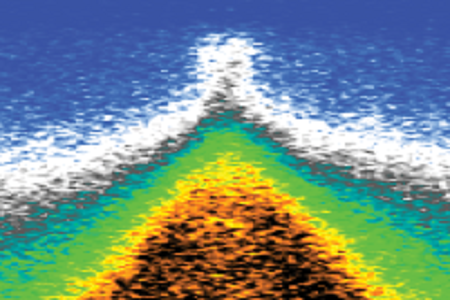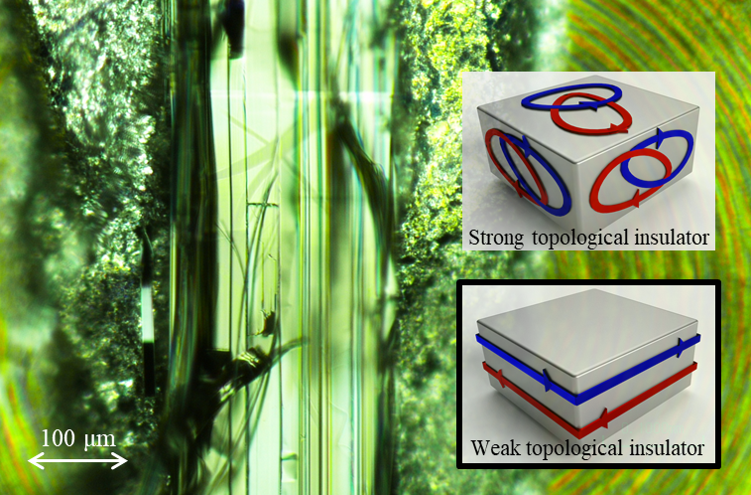Weak but strong Researchers demonstrate novel electronic properties in a special kind of crystal

The demand for ever-increasing performance of technology encourages research into new ways to progress the state of the art. Toward this aim, Professor Takeshi Kondo and his team from the University of Tokyo’s Institute for Solid State Physics explore the new and enticing field of topological materials. Their experimental evidence for what is known as a weak topological insulator could help strengthen this area of electronic materials research.
Typical electronic materials — such as copper wires and silicon semiconductors — serve us well, but lack the nuance required for sophisticated future applications. Topological materials are hotly tipped to advance this area because they conduct and insulate in precise and controlled ways. Importantly, they are also very robust and can maintain their electronic behavior despite local environmental changes — such as heating — which affect how current electronic materials work.
Topological insulators interest Kondo and team because these materials insulate throughout most of their volume but conduct in a controllable way through their thin outer surfaces. There are two kinds of topological insulators — strong and weak. The strong kind were demonstrated soon after they were predicted in 2005. Kondo and team are the first to demonstrate the weak kind. But don’t think that weak means worse, for in this case it’s a strength.
Although both kinds of topological insulators only conduct along their outer surfaces, the weak kind is actually more robust against random non-magnetic perturbations, which could otherwise disrupt its tightly controlled electronic properties. To demonstrate this behavior the researchers had to create a special crystal from a substance called bismuth iodide (β-Bi4I4).
Researchers grew their crystal in a small furnace they built themselves capable of heating up to a few hundred degrees Celsius. The furnace was special in that the distribution of heat within was not uniform but was controllable. By painstakingly adjusting the parameters over 72 hours, the researchers slowly grew their perfect β-Bi4I4 crystal from component molecules.
With the crystal fully grown, they fed a current into it and analyzed it with a sophisticated laser-based technique called angle-resolved photoemission spectroscopy (ARPES). With the high energy and momentum resolutions of ARPES, the researchers verified their theory that the crystal is in fact a weak topological insulator.
“This experimental evidence is extremely encouraging,” said Kondo. “My team and I hope to see future developments benefit new technology such as fast and efficient spintronic devices.”

A microscope image of the crystal β-Bi4I4. In strong topological insulators spin currents are very disordered (upper right).
In weak topological insulators spin currents are highly directional (lower right). Image: © 2019 Takeshi Kondo
Papers
Ryo Noguchi, T. Takahashi, K. Kuroda, M. Ochi, T. Shirasawa, M. Sakano, C. Bareille, M. Nakayama, M. D. Watson, K. Yaji, A. Harasawa, H. Iwasawa, P. Dudin, T. K. Kim, M. Hoesch, V. Kandyba, A. Giampietri, A. Barinov, S. Shin, R. Arita, T. Sasagawa & Takeshi Kondo, "A weak topological insulator state in quasi-one-dimensional bismuth iodide," Nature 566, pages 518–522: February 11, 2019, doi:10.1038/s41586-019-0927-7.
Link (Publication )
)
Related links
- Kondo Group (English)

- Kondo Group (Japanese)

- Institute for Solid State Physics

- Quantum-Phase Electronics Center






